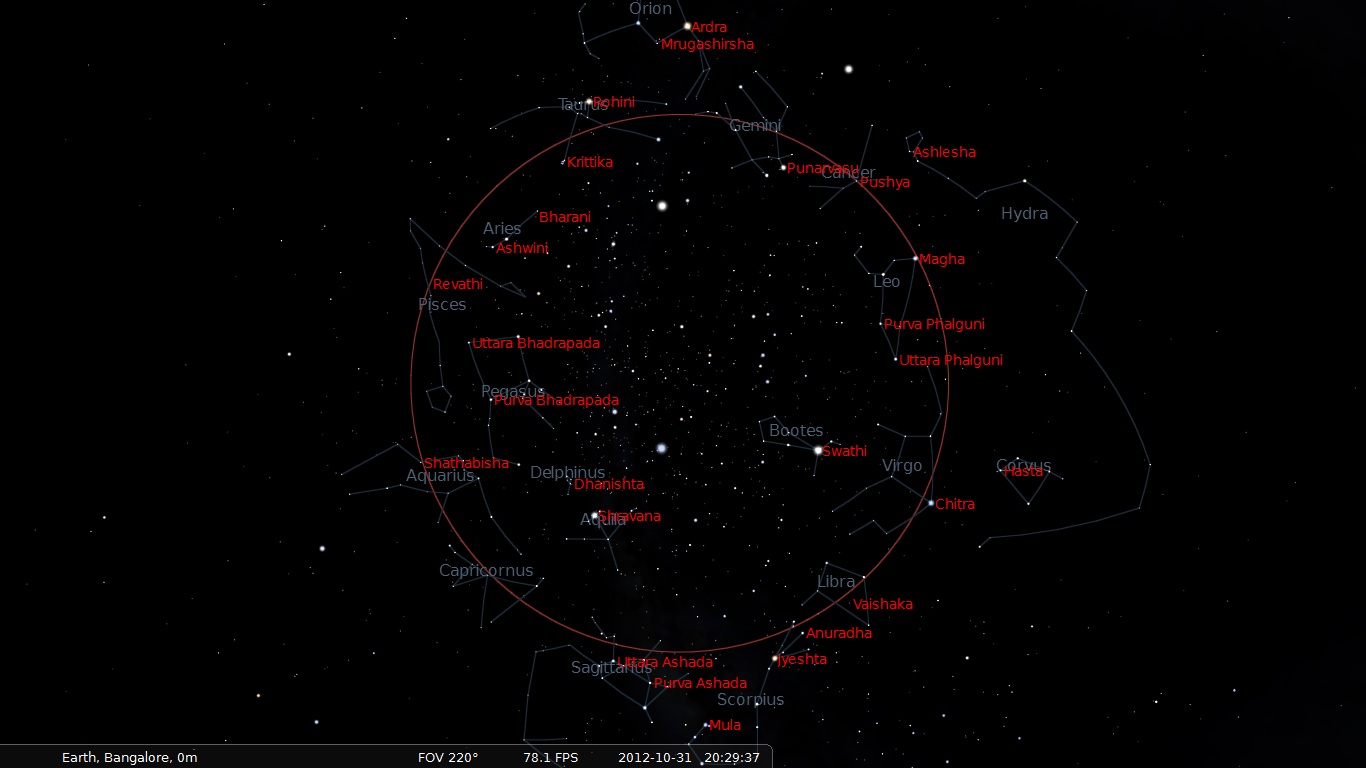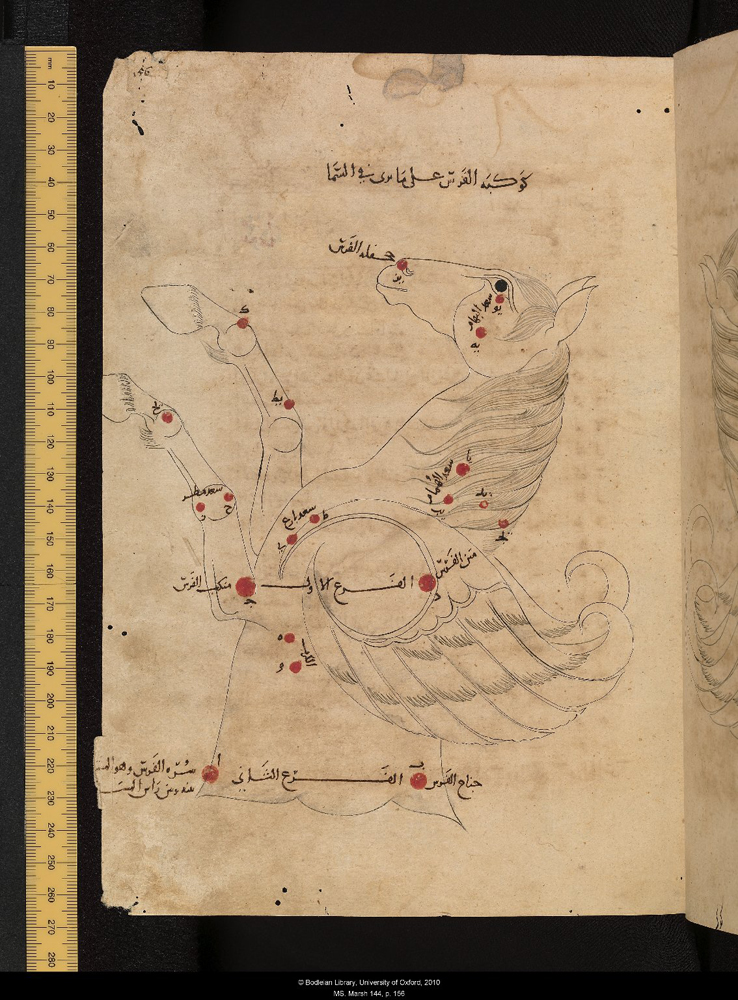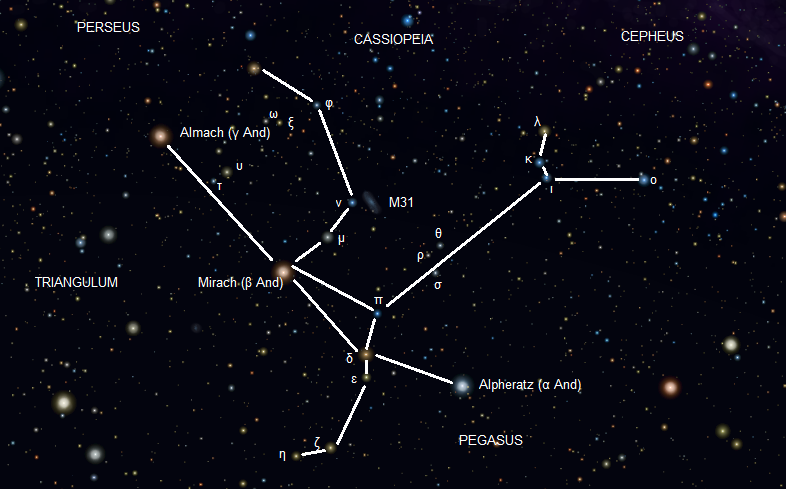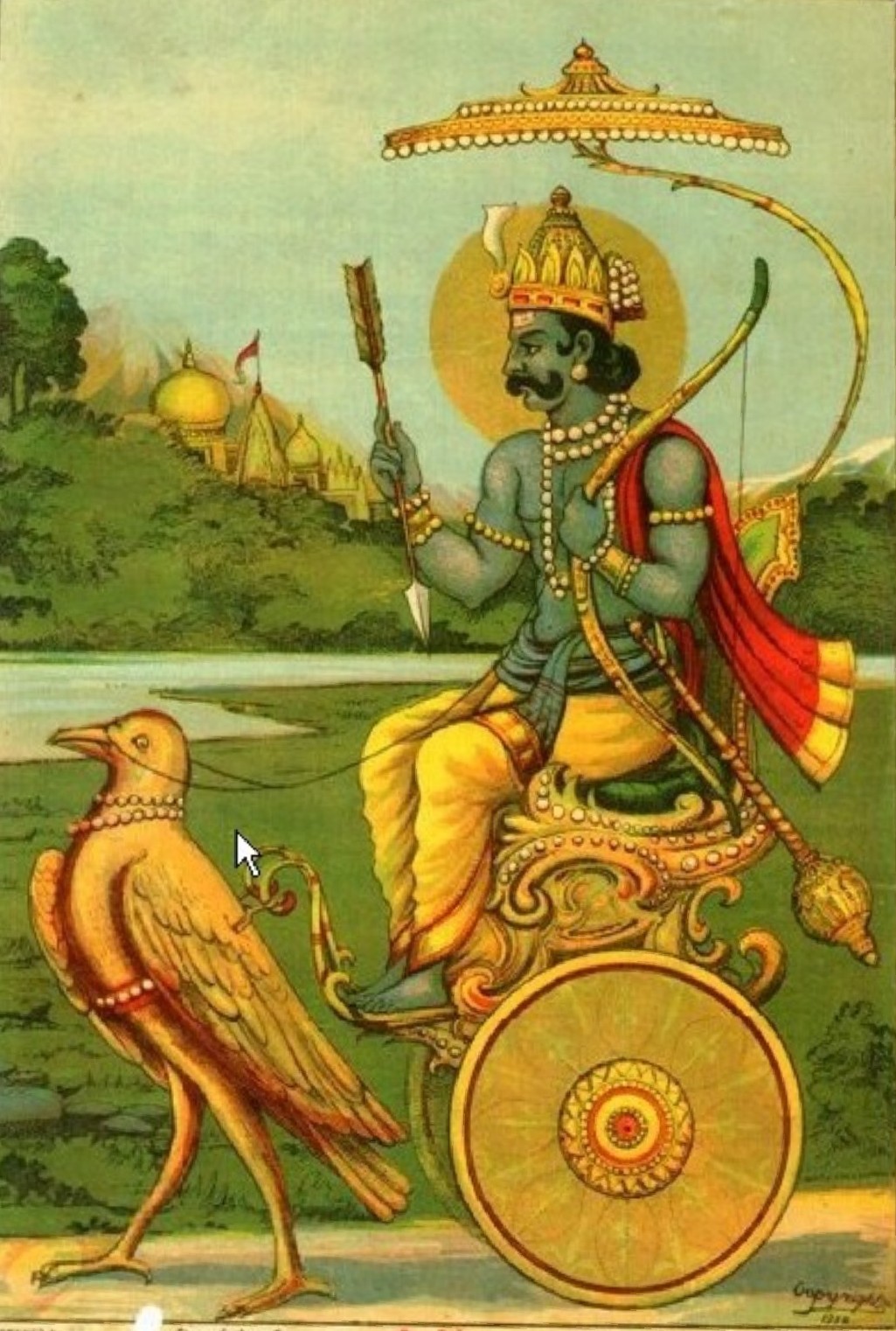|
Uttara Bhādrapadā
Uttara Bhādrapadā or Uttṛṭṭāti (Devanagari: उत्तरभाद्रपदा) is the twenty-sixth nakshatra in Hindu astrology, corresponding to γ Pegasi and α Andromedae. It is ruled by Shani, the deity identified with the planet Saturn. Under the beliefs of electional astrology, Uttara Bhādrapadā is a Fixed constellation, meaning that while it is prominent, it is a good time to build houses, found communities or engage in other activities related to permanence, stability and structure.Dennis M. Harness. "The Nakshatras: The Lunar Mansions of Vedic Astrology". Lotus Press: 1999. . p. 113. Uttara Bhādrapadā is represented by dualistic imagery, often two legs of a bed. Other common symbols include a two-headed man, or twins. The Ahirbudhnya, a serpentine or draconian creature, is the deity which oversees Uttara Bhādrapadā. Male Natives: Physical features: Most attractive and innocent looking person. There is an inherent magnetically force in his loo ... [...More Info...] [...Related Items...] OR: [Wikipedia] [Google] [Baidu] |
Andromeda Constellation Map (1)
Andromeda most commonly refers to: * Andromeda (mythology), a princess from Greek mythology * Andromeda (constellation), a region of the Earth's night sky * The Andromeda Galaxy, an astronomical object within the constellation Andromeda may also refer to: Artistic works Fine art * '' Andromeda Chained to the Rocks'', a 1631 painting by Rembrandt * '' Andromeda (Rodin)'', an 1889 sculpture by Auguste Rodin Literature * ''Andromeda'' (play), lost mythological tragedy by Euripides from 412 BC * ''Andromeda'' (novel), 1957 science fiction novel by Ivan Yefremov * ''The Andromeda'' Strain, 1969 techno-thriller novel by Michael Crichton * '' The Andromeda Evolution'', 2019 science fiction novel by Daniel H. Wilson, sequel to ''The Andromeda Strain'' Music Classical * "Andromède", a symphonic poem written by French composer Augusta Holmès, 1883 * ''Andromeda'', a cantata for the Three Choirs Festival by English composer Charles Harford Lloyd, 1886 * ''Andromeda'', a dra ... [...More Info...] [...Related Items...] OR: [Wikipedia] [Google] [Baidu] |
Devanagari
Devanagari ( ; in script: , , ) is an Indic script used in the Indian subcontinent. It is a left-to-right abugida (a type of segmental Writing systems#Segmental systems: alphabets, writing system), based on the ancient ''Brāhmī script, Brāhmī'' script. It is one of the official scripts of India, official scripts of India and Nepal. It was developed in, and was in regular use by, the 8th century CE. It had achieved its modern form by 1000 CE. The Devanāgarī script, composed of 48 primary characters, including 14 vowels and 34 consonants, is the fourth most widely List of writing systems by adoption, adopted writing system in the world, being used for over 120 languages, the most popular of which is Hindi (). The orthography of this script reflects the pronunciation of the language. Unlike the Latin alphabet, the script has no concept of letter case, meaning the script is a unicase, unicameral alphabet. It is written from left to right, has a strong preference for symmetri ... [...More Info...] [...Related Items...] OR: [Wikipedia] [Google] [Baidu] |
Nakshatra
Nakshatra () is the term for Lunar mansion in Hindu astrology and Buddhist astrology. A nakshatra is one of 27 (sometimes also 28) sectors along the ecliptic. Their names are related to a prominent star or asterisms in or near the respective sectors. In essence (in Western astronomical terms), a nakshatra simply is a constellation. Every nakshatra is divided into four ''padas'' ( "steps"). The starting point for the nakshatras according to the ''Vedas'' is "Krittika" (it has been argued, because the Pleiades may have started the year at the time the ''Vedas'' were compiled, presumably at the vernal equinox), but, in more recent compilations, the start of the nakshatras list is the point on the ecliptic directly opposite the star Spica, called ''Chitrā'' in Sanskrit. This translates to Ashwinī, a part of the modern constellation of Aries. These compilations, therefore, may have been compiled during the centuries when the sun was passing through Aries at the time of the ver ... [...More Info...] [...Related Items...] OR: [Wikipedia] [Google] [Baidu] |
Gamma Pegasi
Gamma Pegasi is a binary star in the constellation of Pegasus Pegasus (; ) is a winged horse in Greek mythology, usually depicted as a white stallion. He was sired by Poseidon, in his role as horse-god, and foaled by the Gorgon Medusa. Pegasus was the brother of Chrysaor, both born from Medusa's blood w ..., located at the southeast corner of the asterism (astronomy), asterism known as the Great Square. It has the formal name Algenib ; the Bayer designation Gamma Pegasi is Romanization of Greek, Latinized from γ Pegasi and abbreviated Gamma Peg or γ Peg. The average apparent visual magnitude of +2.84 makes this the List of stars in Pegasus, fourth-brightest star in the constellation. The distance to this system has been measured using the parallax technique, yielding a value of roughly . Nomenclature ''Gamma Pegasi'' is the star's Bayer designation. Although it also had the traditional name ''Algenib'', this name was also used for Alpha Persei. In 2016, the Inter ... [...More Info...] [...Related Items...] OR: [Wikipedia] [Google] [Baidu] |
Pegasus (constellation)
Pegasus is a constellation in the northern sky, named after the winged horse Pegasus in Greek mythology. It was one of the 48 constellations listed by the 2nd-century astronomer Ptolemy, and is one of the IAU designated constellations, 88 constellations recognised today. With an apparent magnitude varying between 2.37 and 2.45, the brightest star in Pegasus is the orange supergiant Epsilon Pegasi, also known as Enif, which marks the horse's muzzle. Alpha Pegasi, Alpha (Markab), Beta Pegasi, Beta (Scheat), and Gamma Pegasi, Gamma (Algenib), together with Alpha Andromedae (Alpheratz) form the large Asterism (astronomy), asterism known as the ''Square of Pegasus''. Twelve star systems have been found to have exoplanets. 51 Pegasi was the first Sun-like star discovered to have an exoplanet companion. Mythology The Babylonian constellation IKU (field) had four stars of which three were later part of the Greek constellation ''Hippos'' (Pegasus). Pegasus, in Greek mythology, was a winge ... [...More Info...] [...Related Items...] OR: [Wikipedia] [Google] [Baidu] |
Alpha Andromedae
Alpheratz is a prominent star system in the constellation of Andromeda (constellation), Andromeda. Pronounced , it has the Bayer designation Alpha Andromedae, Latinisation of names, Latinised from α Andromedae, and abbreviated Alpha And or α And, respectively. Alpheratz is the brightest stars, brightest star in the constellation when Mirach (βAndromedae) undergoes its periodical dimming. Immediately northeast of the constellation of Pegasus (constellation), Pegasus, it is the upper left star of the Great Square of Pegasus. It is located at a distance of 97 light-years from Earth. Although it appears to the naked eye as a single star with overall apparent visual magnitude +2.06, it is actually a binary star, binary system composed of two stars in close orbit. The chemistry, chemical composition of the brighter of the two stars is unusual as it is a mercury-manganese star whose atmosphere contains abnormally high abundances of mercury (element), mercury, manganese, ... [...More Info...] [...Related Items...] OR: [Wikipedia] [Google] [Baidu] |
Andromeda (constellation)
Andromeda is one of the 48 constellations listed by the 2nd-century Greco-Roman astronomer Ptolemy, and one of the 88 modern constellations. Located in the northern celestial hemisphere, it is named for Andromeda, daughter of Cassiopeia, in the Greek myth, who was chained to a rock to be eaten by the sea monster Cetus. Andromeda is most prominent during autumn evenings in the Northern Hemisphere, along with several other constellations named for characters in the Perseus myth. Because of its northern declination, Andromeda is visible only north of 40° south latitude; for observers farther south, it lies below the horizon. It is one of the largest constellations, with an area of 722 square degrees. This is over 1,400 times the size of the full moon, 55% of the size of the largest constellation, Hydra, and over 10 times the size of the smallest constellation, Crux. Its brightest star, Alpheratz (Alpha Andromedae), is a binary star that has also been counted as a part ... [...More Info...] [...Related Items...] OR: [Wikipedia] [Google] [Baidu] |
Shani
Shani (, ), or Shanaishchara (, ), is the divine personification of the planet Saturn in Hinduism, and is one of the nine heavenly objects ( Navagraha) in Hindu astrology. Shani is also a male Hindu deity in the Puranas, whose iconography consists of a figure with a dark complexion carrying a sword or danda (sceptre) and sitting on a buffalo or some times on a crow. He is the god of ''karma'', justice, time and retribution, and delivers results depending upon one's thoughts, speech, and deeds. Shani is the controller of longevity, misery, sorrow, old age, discipline, restriction, responsibility, delays, ambition, leadership, authority, humility, integrity, and wisdom born of experience. He also signifies spiritual asceticism, penance, discipline, and conscientious work. He is associated with two consorts: Neela, the personification of the gemstone sapphire, and Manda, a gandharva princess. Planet ''Shani'' as a planet appears in various Hindu astronomical texts in Sanskrit, ... [...More Info...] [...Related Items...] OR: [Wikipedia] [Google] [Baidu] |
Saturn
Saturn is the sixth planet from the Sun and the second largest in the Solar System, after Jupiter. It is a gas giant, with an average radius of about 9 times that of Earth. It has an eighth the average density of Earth, but is over 95 times more massive. Even though Saturn is almost as big as Jupiter, Saturn has less than a third its mass. Saturn orbits the Sun at a distance of , with an orbital period of 29.45 years. Saturn's interior is thought to be composed of a rocky core, surrounded by a deep layer of metallic hydrogen, an intermediate layer of liquid hydrogen and liquid helium, and an outer layer of gas. Saturn has a pale yellow hue, due to ammonia crystals in its upper atmosphere. An electrical current in the metallic hydrogen layer is thought to give rise to Saturn's planetary magnetic field, which is weaker than Earth's, but has a magnetic moment 580 times that of Earth because of Saturn's greater size. Saturn's magnetic field strength is about a twen ... [...More Info...] [...Related Items...] OR: [Wikipedia] [Google] [Baidu] |
Electional Astrology
Electional astrology, also known as ''event'' astrology, is a branch found in most traditions of astrology according to which a practitioner decides the most appropriate time for an event based on the astrological auspiciousness of that time. It differs from horary astrology because, while horary astrologers seek to find the answer to a question based on the time the question was asked, electional astrologers seek to find a period of time which will result in the most preferable outcome for an event being planned. Historically used primarily to schedule battles, electional astrology has been used by its proponents to plan a number of events, including weddings and trips. Modern discoveries about the true nature of celestial objects has undermined theoretical bases for believing that their motions affect luck, and empirical scientific investigation has shown that predictions and recommendations based on these systems are not accurate. Astrology in general counts as a pseudo ... [...More Info...] [...Related Items...] OR: [Wikipedia] [Google] [Baidu] |
Hindu Given Names
Indian names are based on a variety of systems and naming conventions, which vary from region to region. In Indian culture, names hold profound significance and play a crucial role in an individual's life. The importance of names is deeply rooted in the country's diverse and ancient cultural heritage. Names are also influenced by religion and caste and may come from epics. In Hindu culture, names are often chosen based on astrological and numerological principles. It is believed that a person's name can influence their destiny, and selecting the right name is essential for a prosperous and harmonious life. Astrologers may be consulted to ensure a name aligns with the individual's birth chart. India's population speaks a wide variety of languages and nearly every major religion in the world has a following in India. This variety makes for subtle, often confusing, differences in names and naming styles. Due to historical Indian cultural influences, several names across Sout ... [...More Info...] [...Related Items...] OR: [Wikipedia] [Google] [Baidu] |






